
At Hard to Read, Everybody's A Writer and Everybody's A Reader
A Reading Series That's A "Literary Social Practice"
People like to say, “Everybody’s a writer now,” thanks to text messaging, email, and social media posts. At Hard to Read, I rely on that premise in my casting. I would host almost anyone; all I ask is that you try.
Hard to Read began as a monthly lit series at the Standard hotels in Los Angeles in late 2016, and events are held all over the place now. The next one will be at a new nonprofit arts space in Berlin called Fragile, and the last occurred in the basement atrium of a mirrored mall in Manhattan’s Chinatown, at the Jeffrey Stark gallery. Readers have included visual and performance artists, poets, journalists, authors, actors, activists, academics, therapists, yoga instructors, musicians, computer programmers, party kids, and porn stars. I’d love to get lawyers, housing activists, Alexandria Ocasio-Cortez, and teenagers and kids in the mix.
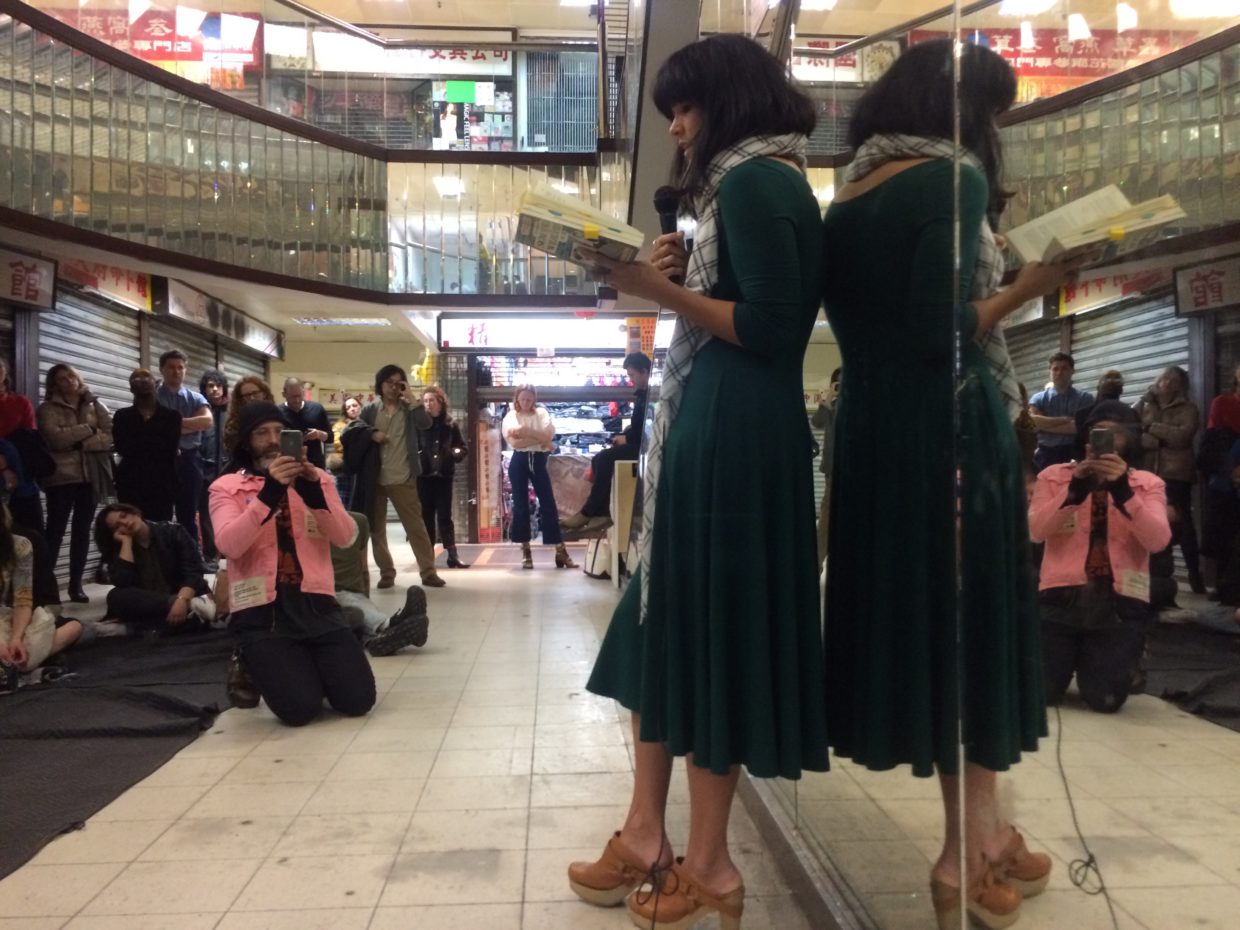 Jamieson Webster reads at Love A Loves Me! event at Jeffrey Stark.
Jamieson Webster reads at Love A Loves Me! event at Jeffrey Stark.
I usually reach out to potential readers via email or social media. Sometimes we’re already friendly or have friends in common, but it’s just as likely that I’m sending a cold email (the practice is natural to me now, having worked as an arts journalist since 2012). When I started Hard to Read, I already had a list of 100-plus people to invite. Many were writers and artists I’d profiled: author Chris Kraus; poet/astrologer Ariana Reines; actor Mackenzie Davis; artist/musicians Chloe Maratta and Flannery Silva of the band Odwalla 122; and artists Hannah Black, Margaret Haines, and Sojourner Truth Parsons have all read for the series.
And I’m always scouting for readers—at parties and openings, on social media, in magazines like New Models and Sex (defunct as of 2018, but still inspiring), and on the shelves of New York’s McNally Jackson Books, where I also value the recommendations of booksellers. I’m listening, above all, for voice. I also ask confidantes for recommendations. Hosting unknowns makes Hard to Read 100% more interesting to me.
I tell my readers they can read anything: their own or someone else’s writing, a to-do list, favorite song lyrics, and more. For the most part, people really deliver—I’ve hosted close to 300 people so far and have only been disappointed by three selfish egos.
I’ve recently expanded our tagline to “a literary social practice,” as those are the fewest words I can summon to describe what’s going on.
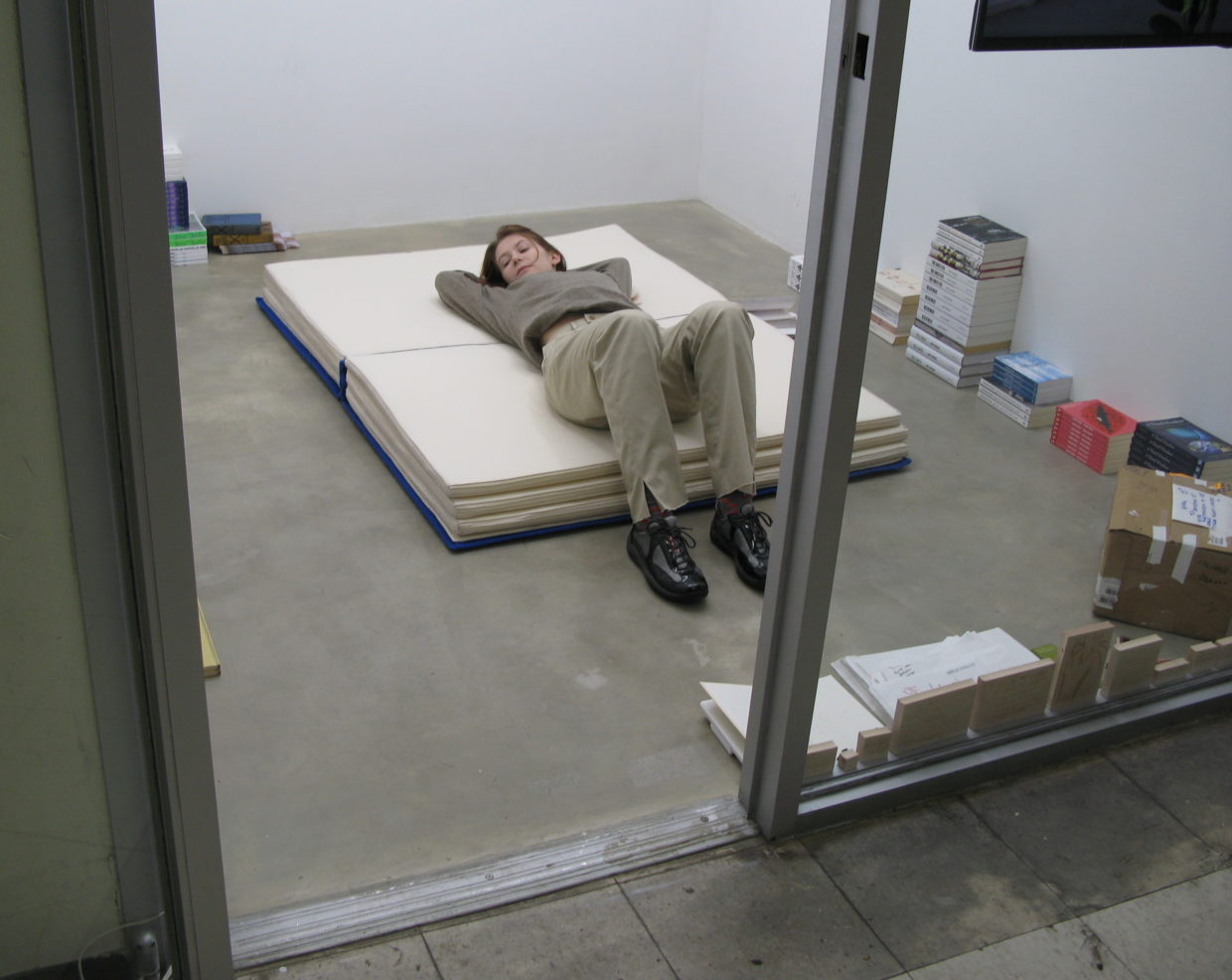 Fiona Alison Duncan in Love A Loves Me! at Jeffrey Stark, photo by Asher Penn
Fiona Alison Duncan in Love A Loves Me! at Jeffrey Stark, photo by Asher Penn
I like to program around themes—either my current obsessions, a book that inspires me, or an artist or writer’s work I want to promote. “Gossip,” “Body Language,” “Madness,” and “Shame Lies on the Eyelids: On Shame and Ambition” are past successes. When I have disparate people I want to host, my themes will be all-encompassing or vague, like the one for the upcoming Berlin event: “A tease that’s a bond, not a separation.” That’s a line from Anishinaabe writer Gerald Vizenor that Montreal artist Alix Van Der Donckt-Ferrand included in a zine we published together. A video of Alix reading that zine will screen in Berlin, alongside a video by Irish artist Eoghan Ryan and live shares from choreographer and artist Tarren Johnson, writer and artist Mahsa Saloor, musician Dan Bodan, and model Marc Elsner.
Group readings are great because you’re pretty much ensured an audience. If each reader brings at least one friend, family member, or die-hard fan, you’ve got a crowd. I’ve noticed it’s never-before-readers—a surfer, say—who bring the thickest crowd: mom, sis, old and new friends all want to see what will happen.
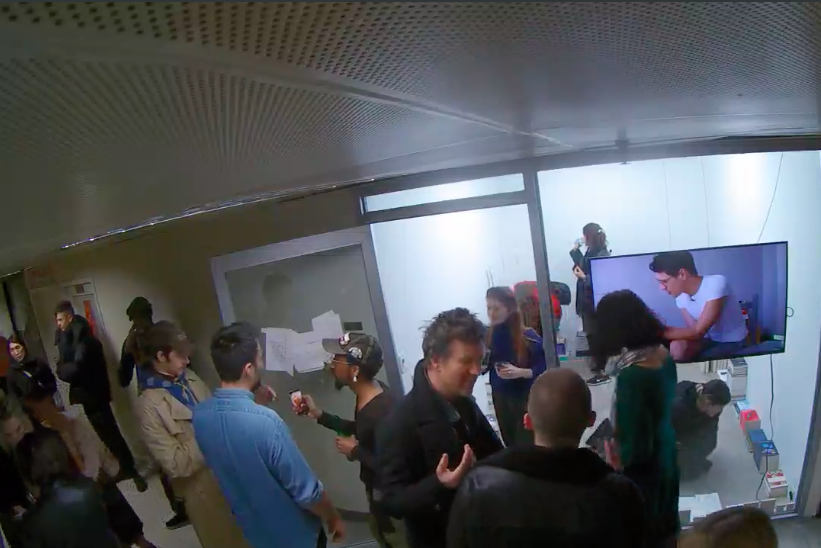 Jeffrey Stark event security footage
Jeffrey Stark event security footage
Hard to Read has mostly come together by accident. During its first year, the series existed month-to-month, with no future plans; I hosted eighteen events, but each one could have been the last. At first, Hard to Read served a few basic needs for me—among them, building self-esteem (I’d had voice-cracking performance anxiety at the beginning), connecting with solid people, and celebrating integrity, intelligence, and rawness. I sense that Hard to Read has succeeded as much as it has because other people share these needs and are encouraged by the publicness of my offering.
Live readings are its heart, but Hard to Read also has arms, legs, a pelvic floor, and a tail. I’ve recently expanded our tagline to “a literary social practice,” as those are the fewest words I can summon to describe what’s going on. There’s a “diffusion line,” Ready-to-read by Hard to Read, which consists of books curated and presented in tandem with the fashion-seasonal calendar; the books are sold at Eckhaus Latta’s Los Angeles shop, and we hold synchronistic events. There’s a spinoff series, Pillow Talk, of interactive, community-driven events on sex, love, and communication held in hotel rooms and domestic bedrooms. I’ve hosted lit-themed film screenings, talk-show livestreams, and 24 hours of live radio, curated letters for a magazine and libraries, and made zines and T-shirts—all as Hard to Read.
“They only let us in when the ship’s going down.”
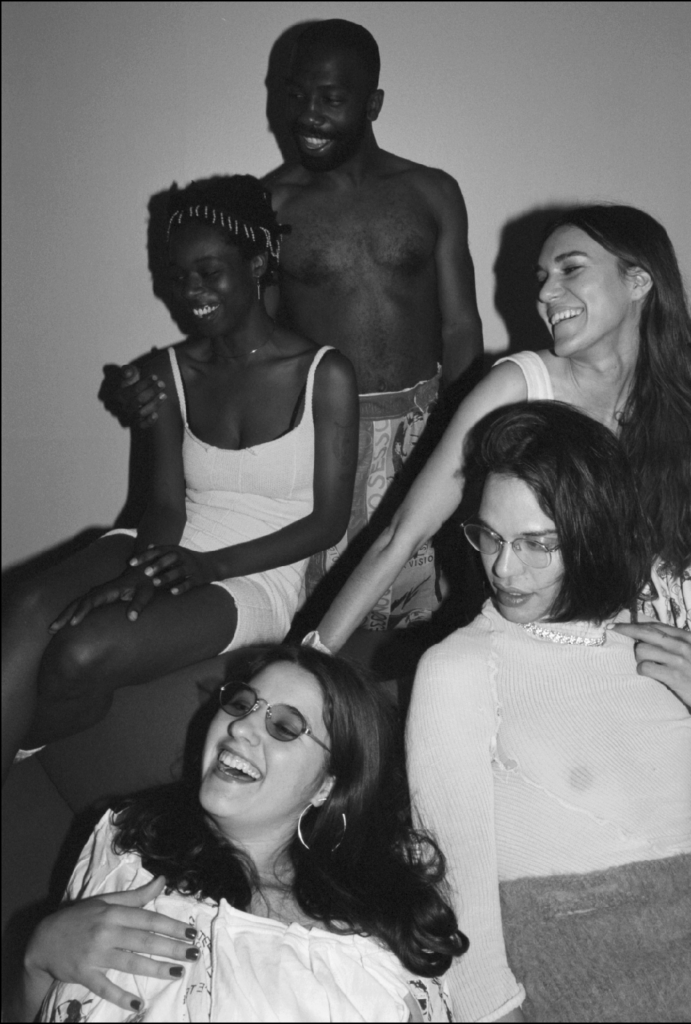 Pillow Talk event, photo Jasper Briggs
Pillow Talk event, photo Jasper Briggs
This winter, at the Jeffrey Stark gallery, I presented a show centered on a video of fifteen notable readers in my life reading favorite passages from favorite books; those books were for sale, as well as the readers’ own books and art. For our live reading in January, two readers from the video, artist Alicia Novella Vasquez and writer/editor Fabiola Ching, read fragments they’d composed at and about their day jobs. Psychoanalyst and author Jamieson Webster read two case studies—one from her new book, Conversion Disorder, and one by Freud. I also read writing I’d composed as part of a performative art exhibit. And lastly, self-described “fictional journalist” Kaitlin Philips read the opening to Janet Malcolm’s The Journalist and the Murderer. The title/theme of the evening was “Writing at Work.”
For my performance at the Hard to Read Jeffrey Stark show, I sat in a room as small as my bedroom, in the corner of the Chinatown mall’s basement, for eight weeks—four days a week, for 3-4 hours a day. I was right beside the men’s bathroom, where the same people came to smoke cigarettes, weed, and heavier drugs every few hours. Some days, I had plenty of outside visitors, but there were many times when these mall regulars and the security guards were the only people who engaged with me. We were also on camera—security footage of the gallery livestreams 24/7 on its website.
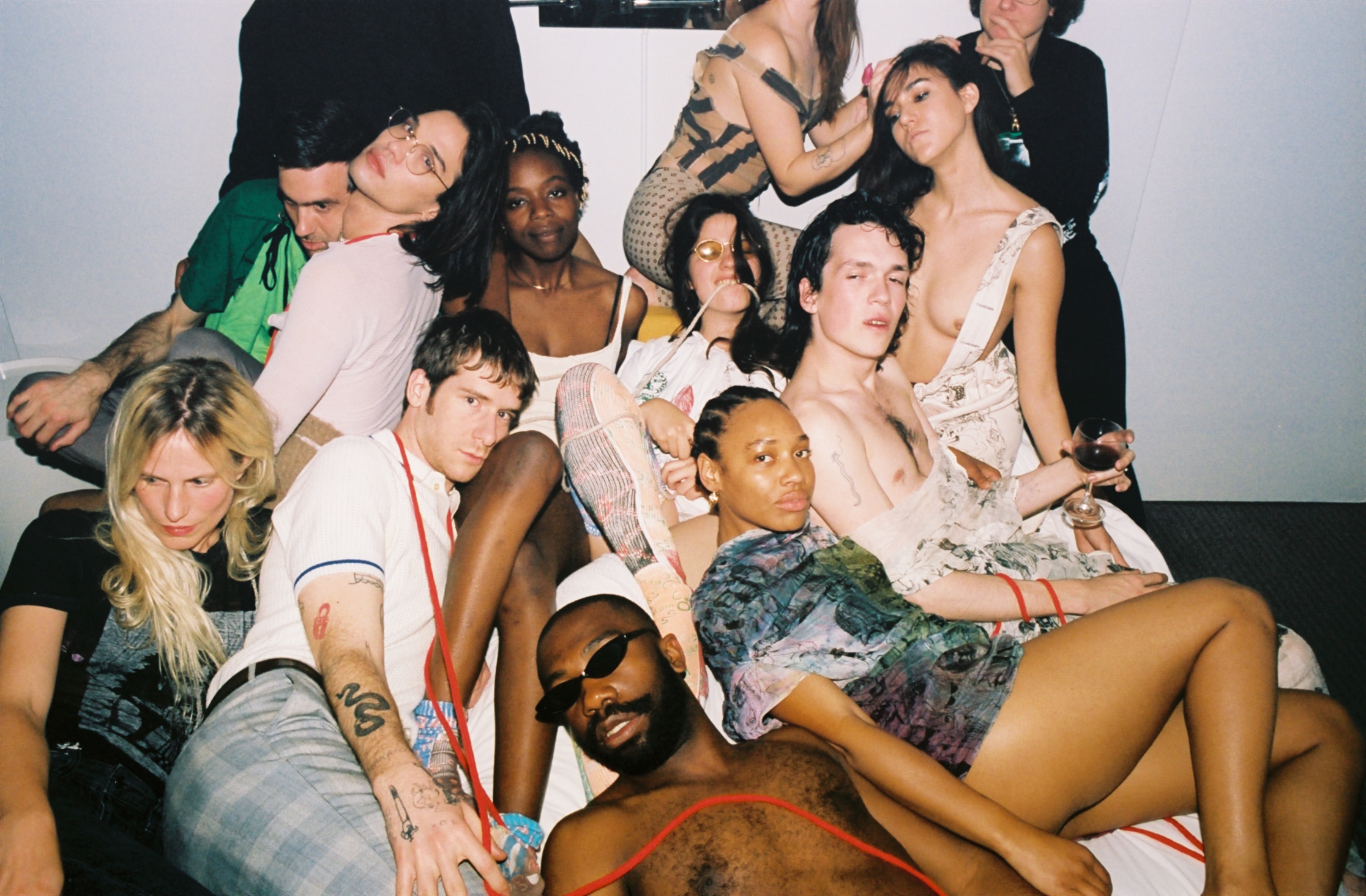 Pillow Talk event, photo Jasper Briggs
Pillow Talk event, photo Jasper Briggs
Until now, Hard to Read has been close to a charitable operation: my readers and I work hard to make it happen, for little more than a great energetic exchange. But ever since I read that a majority of professional writers earn below the poverty line (and I’m among them), sustainability and resources have been on my mind.
Recently, I was talking with a repeat Hard to Read contributor and friend, Argentinian-Spanish artist Amalia Ulman, about how the internet and new media have made it possible for many new, diverse voices to participate in the literary arts, while the industry’s economy has been decimated. “That’s how it always is,” Amalia said. “They only let us in when the ship’s going down.”
I’m currently researching both band-aid and long-term fixes to supplement writers’ income and assert the value of what we do.
Fiona Alison Duncan
Fiona Alison Duncan is a Canadian-American writer, artist, event organizer, and independent bookseller. Her first novel, Exquisite Mariposa, is forthcoming from Soft Skull Press in Fall 2019. For more details follow @hardtoread.



















